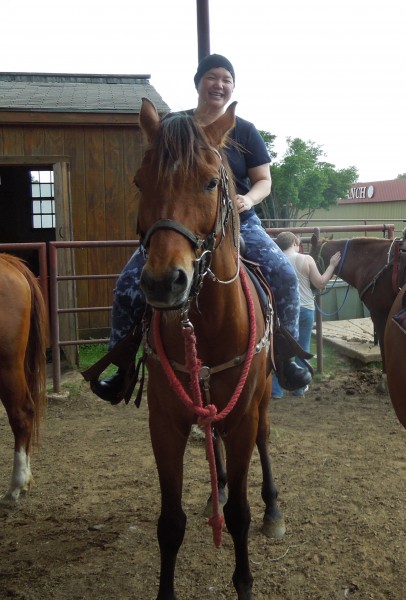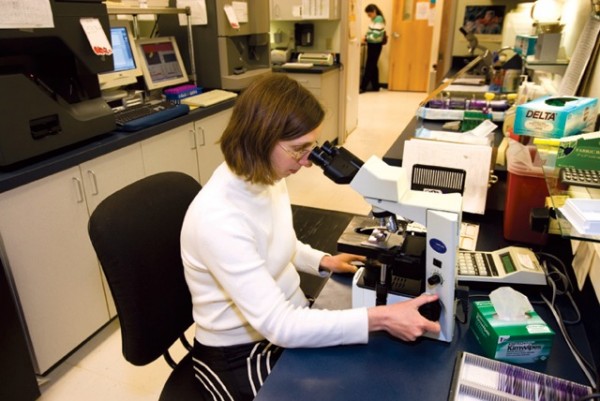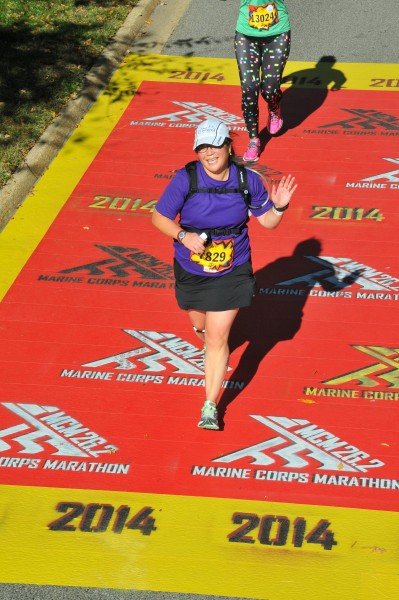Konnie Stinson is one of those people who just try to push through it when they’re hurt or don’t feel well. That’s what she did back in 2013 when she had a host of unusual symptoms. Nausea, blurred vision, dizziness, headaches and exhaustion. “All symptoms you might have if you’re tired or work out too hard or are busy or have low blood sugar,” she says. “I just kept trying to explain them away.”
Then came the day she realized it might be something serious. In March 2013, she registered to run in the Marine Corps Marathon the following October. She’d been training for months, running with no problem. “Fast forward a few weeks,” says Konnie, “and I could not descend a flight of stairs without being out of breath.”
She called her doctor, who ran some blood tests. The next thing Konnie knew, she was at Dana-Farber Cancer Institute in Boston. Diagnosed with a cancer she’d never heard of before.
Waldenstrom’s Macroglobulinemia. It’s also known as lymphoplasmacytic lymphoma. Commonly referred to as WM or Waldenstrom’s.
“Waldenstrom’s is an infiltration of a collection of IgM cells in the bone marrow and lymph nodes,” explains Dr. Helen Ryan, Konnie’s oncologist/hematologist at New England Cancer Specialists in Scarborough. “IgM is an antibody that’s part of the immune system. It’s produced early on in an infection and then switches over to another antibody called IgG.”
IgM is made by plasma cells in the blood, which start out as white blood cells called B-lymphocytes. Waldenstrom’s occurs when, for some unknown reason, a B-lymphocyte becomes malignant and starts multiplying and dividing uncontrollably. When that happens, the cancerous cells crowd out normal cells in the bone marrow and lymphatic system. It causes the blood to become too thick and results in all those symptoms (and more) that Konnie experienced.
Common Waldenstrom’s symptoms
- Fatigue
- Headaches
- Weakness
- Shortness of breath
- Dizziness, loss of coordination, confusion
- Blurred or decreased vision
- Nosebleeds, bleeding gums
- Unexplained weight loss, loss of appetite
- Numbness, tingling or burning sensation in feet or legs
- Fevers
- Night sweats
- Swollen lymph nodes
- Swollen belly
- Frequent infections
Waldenstrom’s is a rare disease. In one year, it will strike about 1,000 to 1,500 people in the United States. Three people in one million. Men get it twice as often as women. The average age people are diagnosed is in their mid-60s. Konnie is an aberration. She’s still in her 40s.
“I credit my quick diagnosis to my PCP, Dr. David Keller,” says Konnie. “He is astute and alert and listens to his patients. But for him I could have been one of the thousands of people who feel terrible for months and years and nobody can tell them why. From the day I walked into his office to my diagnosis was about a month.”
Treating Waldenstrom’s
Within a week of her diagnosis, Konnie was on chemotherapy. She was also undergoing plasmapheresis. It’s a procedure that removes unwanted material from the blood so it won’t be so thick. Her cancer is not curable, but with proper treatment, Waldenstrom’s can often be managed much like a chronic disease.
The future of treatment looks hopeful, says Dr. Ryan. “There are definitely things in the pipeline that will increase our ability to stretch things out,” she says, “and hopefully come up with a good combination of different targeted agents that could lead to a cure.”
Currently, Waldenstrom’s is treated with targeted chemotherapy and immunotherapy. One uses a monoclonal antibody to attack and clear away protein in the cancer cells without affecting other cells. The other shuts down the process that allows the cancerous protein to circulate inside the cells. Together, they can offer years of remission.
Chemo didn’t work for Konnie, but her doctors offered her another treatment option. In January, she had a bone marrow transplant at Brigham and Women’s Hospital in Boston.
“Nothing prepares you for what you will experience,” she says. “I did fairly well through the process. Three weeks inpatient and two months at home. I’m pretty resilient.”
Resilience
That resilience was on full display a few months before her transplant when Konnie finally ran the Marine Corps marathon she had hoped to do the year before. The entire time she trained, she was on chemotherapy. “Chemo for this disease is tolerable. I would schedule it so that in two days I could be out running my 20 miles,” she explains. “They want you to be as active as you can be, so they try to support that throughout the process.’
The support she continues to get from her medical team, her family, and other patients is key to Konnie’s resilience. So much so, that she decided to start a support group in Maine for people with Waldenstrom’s. She and others from Maine and New Hampshire attend a Massachusetts support group. It’s the closest one.
Konnie launches a Waldenstrom’s support group
Konnie’s Waldenstrom’s support group meets at the Cancer Community Center in South Portland.She says the primary goals of the group will be support and education (for patients, family members and the general public, if interested). “We are looking forward to having some great speakers in 2016,” she says. “It’s exciting to have access to doctors who go around the globe to speak on the issue.”
The support group will be facilitated by Konnie in partnership with the International Waldenstrom’s Macroglobulinemia Foundation (IWMF). IWMF is a great resource if you’d like to learn more about Waldenstrom’s.
For more information about the first support group meeting and directions to the Cancer Community Center, visit the Cancer Community Center website.




Another terrific story about an amazing person! I love how these stories are “finding” you and you share such valuable information–and inspiration–with your readers.
Great story and I’m still learning about all this WM.
Thank you Konnie for sharing your story. I too have WM, just diagnosed earlier this year. I did the plasmapheresis when first diagnosed and just finished chemo and moving now to a chemo maintenance program. It is encouraging to read your story, good luck!